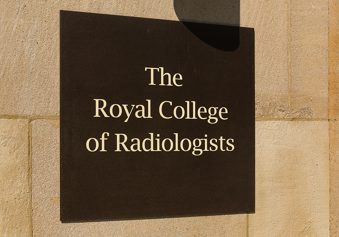Radiology reporting of osteoporotic VFFs on CT
DATA COLLECTION IS NOW CLOSED
Why is the topic a priority?
Vertebral Fractures are the most common osteoporotic fracture. Studies suggest that 12% of older women have vertebral deformities, which increases with age to 20% in women over the age of 80. The majority of which will be osteoporotic in origin. Unfortunately, a high percentage (50- 70%) of vertebral fractures are undiagnosed. Vertebral fractures are a powerful predictor of hip fractures, with an increased relative risk for hip and subsequent vertebral fractures.
The identification of vertebral fractures in this population group is a valuable opportunity to reduce the significant economic burden and human cost to patients and the NHS. Each vertebral fracture accounts for 14 additional GP visits every year and may go undiagnosed which further generates costs to the NHS in repeated GP consultations. There is an 8-fold increase in age adjusted mortality associated with vertebral fractures. Untreated, vertebral fractures often progress to involve multiple levels, leading to disabling pain, kyphosis, incontinence and can cause swallowing and breathing difficulties.
The previous National RCR Audit in 2019 revealed that there was a lack of compliance with all the audit reporting standards with fracture severity mentioned in 26.2% (target >90%) of reports, appropriate terminology used in 60.1% and appropriate referral to fracture management pathways recommended in 2.6% (targets 100%).
Early identification of vertebral fractures is the key to preventing further fractures. Radiology is uniquely placed to bring about the greatest improvements in this pathway as fractures can be reported opportunistically.
Aims
The initial audit in 2019 revealed a nationwide lack of compliance within the recommended reporting standards. This is a re-audit following a number of interventions by the Clinical Radiology Audit and Quality Improvement Committee/RCR, the Royal Osteoporosis Society and the Royal College of Physicians. The interventions included:
- Publication of the 2019 audit findings in European Radiology,
- Local Quality Improvement provided by the Royal Osteoporosis Society
- RCR guidance on VFF reporting for UK-wide distribution
- Editorials on VFF reporting in Clinical Radiology, European Radiology and Osteoporosis International (PDF)
- A poster at the Royal Osteoporosis Society's Osteoporosis Online event in 2020.
The aim of this project is to determine whether the observance of these standards has improved nationwide and to further improve VFF awareness and reporting standards, stressing the importance of:
- The link between VFF and subsequent hip fracture
- Reporting incidental VFFs
- An agreed reporting system
- Correct terminology in reports
- Onward referral, ALERTS and FLS network
- An agreed system to highlight patients with VFFs so they are failsafe picked up once reported.
Audit & Quality Improvement
Audit is a quality improvement cycle that measures the effectiveness of healthcare against established standards. Access our audit library and view our publications.
